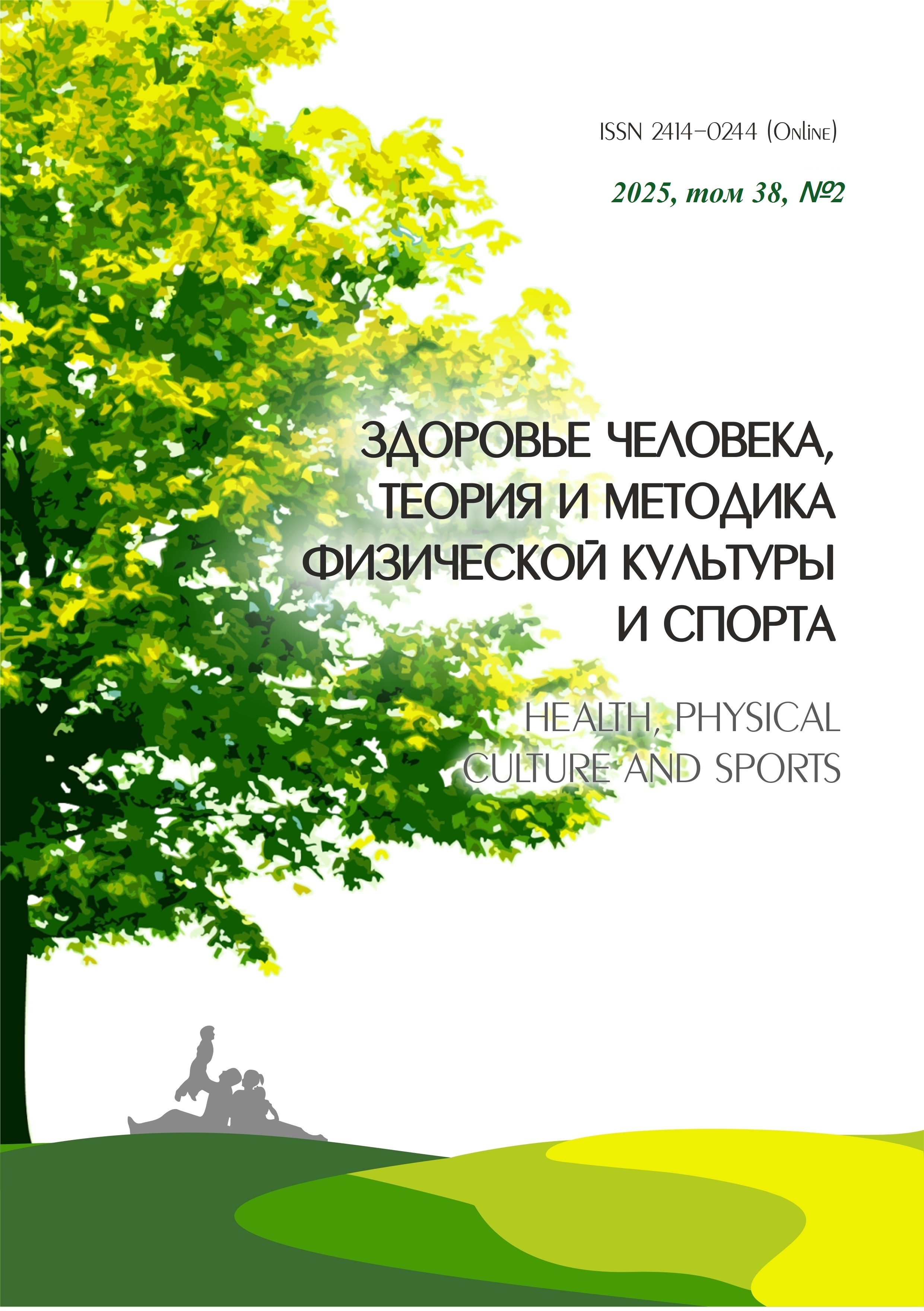COMPARATIVE ASSESSMENT OF PSYCHOPHYSIOLOGICAL AND PERSONALITY CHARACTERISTICS OF CHILDREN PARTICIPATING IN PRIMARY SPORTS TRAINING GROUPS
Abstract
In modern sports, special attention is paid to the psychophysiological and personal characteristics of young athletes. These aspects play a key role in successfully mastering new skills, adapting to training loads, and achieving athletic results. At the initial stage of sports training, not only physical skills are formed, but also psychophysiological features are manifested, which can significantly affect the further development of young athletes. Objective: to compare the psychophysiological and personal characteristics of children involved in various sports at the initial stage of sports training. Materials and methods of research. The assessment of the psychophysiological and personal characteristics of 30 children involved in primary education groups: basketball, rhythmic gymnastics, martial arts. All respondents have experience in their chosen sport from 1 to 3 years, and children are 7-9 years old. The study was conducted using the Hardware and software complex "Sports orientation of children and adolescents", the results of the module psychophysiological tests and the module personality tests were taken into account. The results obtained during the study have been mathematically processed. Results. The psychophysiological characteristics of children involved in various sports differ significantly and have significant differences in the indicators of reaction to light and reaction of choice. The response to a light stimulus is significantly higher in children engaged in martial arts than in young gymnasts. The selection reaction time in the initial martial arts training groups is significantly better than that of the basketball students. In all groups, there is a low level of reaction to sound. Personality traits have significant differences in the indicator of mental stability, which is significantly lower among basketball players in comparison with groups in the sport of martial arts and rhythmic gymnastics. The work efficiency of children of all groups is at a low level, significant differences (p <0.05) were found between groups of children engaged in rhythmic gymnastics and young athletes engaged in martial arts. Young basketball players showed the fastest degree of development. Conclusions. In the course of the conducted research, it was found that in the groups of initial training of various sports there are significant differences in indicators: reaction to light, reaction of choice, work efficiency and mental stability. The severity of the psychophysiological and personal characteristics of children in the initial training groups made it possible to assess the formation of the psychophysiological status of a young athlete under the influence of the training process of the chosen sport.
Downloads
References
Ильин, Е. П. Психомоторная организация человека. СПб.: Питер, 2003. 384 с. 8
Козак Л. М., Коробейников Г. В., Коробейникова Л. Г. Физическое развитие и состояние психофизиологических функций у детей младшего школьного возраста // Физиология человека. 2002. Т. 28, № 2. С. 35–43.
Мосина Н.В., Бондарева А.А. Релевантность существующих методов оценки предрасположенности ребенка к занятиям конным видом спорта //Международный журнал Гуманитарных и естественных наук. 2021 г. №1-2 С. 106-112.
Никандров, В. В. Психомоторика. СПб.: Речь, 2004. 104 с.
Нопин С.В. Разработка компьютерной программы "Спортивная ориентация детей и подростков" / С.В. Нопин, Ю.В. Корягина, Г.Н. ТерАкопов // Современные вопросы биомедицины. - 2017. - Т. 1. № 1 (1). - С. 5. – Текст: непосредственный.
Практикум по возрастной физиологии: для студентов институтов физической культуры и спорта / Изд. 2-е. переработанное и дополненное, Автор-составитель И. В. Гуштурова, Ижевск: Издательский дом «Удмуртский университет», 2018. 140с.
Пугачева В.А. Важность спорта в жизни детей / В.А. Пугачева // Аллея науки. – 2019. – Т. 1, № 11 (38). – С. 72–75
Харитонова Л. Г. Технология мониторинга психофизиологического состояния организма юных спортсменов циклических и ациклических видов спорта / Л. Г. Харитонова, О. С. Антипова, И. В. Павлова // Наука и спорт: современные тенденции. - 2014. - № 1 (Том 2). - С. 10-22.
Цветкова Л. С. Методика нейропсихологической диагностики детей. М., 2000. 96 с
Черницына Н.В., Аксарина И.Ю., Мосина Н.В. Влияние занятий различными видами спорта на формирование осанки детей старшего дошкольного и младшего школьного возраста // Человек. Спорт. Медицина. 2024. Т. 24, № S1. С. 158–165. DOI: 10.14529/hsm24s121
Чесноков Н.Н. Современные тенденции и подходы к развитию детско-юношеского спорта / Н.Н. Чесноков, В.Г. Никитушкин, А.П. Морозов // Физ. культура, спорт – наука и практика. – 2022. – № 1. – С. 77–82
Яковлев Б.П., Мосина Н.В., Аксарина И.Ю., Аксарин И.В. Психолого-педагогический аспект исследования предрасположенности к выявлению и развитию спортивной одаренности детей //Бизнес. Образование. Право. 2022. № 1 (58). С. 283-287.
De Souza-Lima, J. Detecting sporting talents with z-strategy-cross sectional study / J. De SouzaLima, J.L. Zamora // Revista Brasileira de Medicina do Esporte. – 2020. – Vol. 26 (2). – Р. 147–152
Talent Research in Sport 1990–2018: A Scoping Review / J. Baker, K. Johnston, S. Wilson et al. //Frontiers in Psychology. – 2020. – Vol. 11. – Р. 607–710.
The use of individual sports profiles of child athletes and nonathletes in recommending sports to be practiced / R. Kandrac, M. Kokinda, T. Peric et al. // Physical Activity Review. – 2020. – Vol. 8 (1). – Р. 1–8.
Understanding the “gut instinct” of expert coaches during talent identification / A.H. Roberts, D. Greenwood, M. Stanley et al. // Journal of Sports Sciences. – 2021. – Vol. 39 (4). – Р. 359–367.
An author should not normally publish manuscripts describing essentially the same research in multiple journals or publication venues. Such redundant publication is generally considered to constitute unethical publishing behavior, and if discovered may result in a manuscript under consideration being rejected, or a published article being retracted.
Authors of manuscripts reporting on original research should present an accurate account of the work performed, accompanied by an objective discussion of its significance. Underlying data should be represented accurately in the manuscript. The manuscript should contain sufficient detail and references to permit others to replicate the work. The fabrication of results and the making of fraudulent or knowingly inaccurate statements constitute unethical behavior and may be cause for rejection or retraction of a manuscript or published article.





